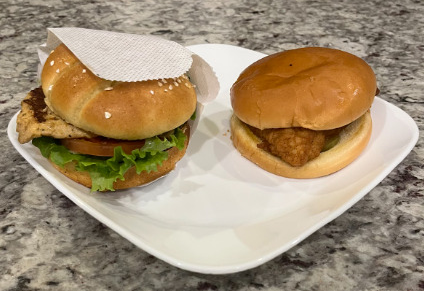
With winter sports coming up fast, Woodgrove student athletes need to develop healthy eating habits to be at the top of their game. Many student athletes may have trouble finding nutritional snacks and post workout meals, and some foods that are readily available to students are usually not helpful to their muscle growth, energy, and dietetics.
Snacks are essential to get athletes through their practice or meet, but eating them at the wrong time can be detrimental. Cross country coach Kathleen Jenkins expanded on the topic, advising, “They need to know how much time their body needs to process all the nutrients in the snack. For me personally, I can eat an hour before a run and be perfectly fine, but I know before I conditioned my body to do that, I had to have like four-five hours before a run after eating something.”
The types of snacks students should eat are ones with a high amount of protein. According to Piedmont Healthcare, protein is essential for muscle growth and recovery from hard workouts. Protein-abundant snacks include protein shakes, protein bars, meat jerky, cottage cheese, and boiled eggs.
There are various foods that athletes should avoid like the plague. Some are obvious like fast food, fried food in general, processed food, and unnecessary sugar, but sometimes food can be labeled as unhealthy when it actually contains many benefits. Fats are a great example of this, as many fats in processed food are unhealthy, but fats in general are not all bad. The fats that should be side-stepped are saturated and trans saturated fats, and according to Harvard Health Publishing, the fats that one should try to eat more of are monounsaturated or polyunsaturated fats. These can lower cholesterol levels. Examples of these fats are avocados, nuts, chia seeds, and fish. While these fats are good for one’s nutritional needs, they shouldn’t be consumed in mass quantities.
Long time coach of long distance track Kent Staneart shared his tips on eating and nutrition, explaining, “Hydration, hydration, hydration. A nutritionist told us one time that without hydration, it’s almost like your blood is moving like mud. Like a mud slide, it’s slow and sloppy, whereas with a lot of hydration, it moves much more efficiently.” If an athlete is dehydrated, they can experience dizziness, fatigue, confusion, and vomiting. Athletes should strive to drink around 91 to 125 ounces of water (11 cups to 15 cups) every day according to the Mayo Clinic, and they should drink fluids regularly during workouts.
One other thing that students can do to improve their nutrition is replace an unhealthy food option with another that is healthier. Take Chick-fil-A for an example. While they have a very popular fried chicken sandwich, it is also very unhealthy due to the amount of sodium found in the meal. One Chick-fil-A fried chicken sandwich has 1460 mg of sodium. By replacing this with the grilled chicken sandwich, one can cut that number in half to only 770 mg of sodium, and still keep the same high protein count of 28 g.
If student-athletes do not want to fall behind in their respective sport, then they need to keep their nutrition in mind daily.


